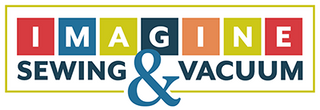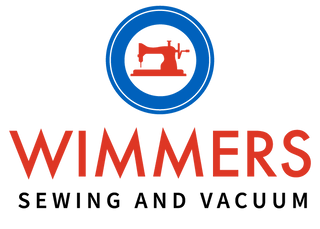Do you know there are two types of sewing machines? We’re not talking about different brands, we’re talking about mechanical versus computerized sewing machines. What’s the difference? And which one should you have? The choice between a mechanical and a computerized sewing machine significantly influences the range of tasks a machine can perform. Each type has its unique characteristics, advantages, and considerations. Let’s take a look at the differences between mechanical sewing machines and computerized sewing machines.
Mechanical Sewing Machines
Mechanical sewing machines are the traditional workhorses of the sewing world. Operated manually with mechanical controls, these machines rely on knobs, dials, and levers to adjust stitch length, width, and tension. Mechanical machines are straightforward, durable, and user-friendly, making them an excellent choice for beginners or those who prefer a no-frills approach to sewing. These machines are praised for their reliability and ease of maintenance, with fewer components susceptible to electronic malfunctions.
Computerized Sewing Machines
Computerized sewing machines have surged in popularity due to their advanced features and enhanced functionality. These machines are equipped with a microprocessor, aka a computer, and a digital interface, allowing for programmable control over your stitch width, length, and more. Computerized machines offer a vast array of built-in stitches, embroidery options, and automated functions, such as needle threading and cutting. This makes them ideal for experienced sewists, those who love to dive into intricate projects, or anyone who loves the latest and greatest in technology.
One significant advantage of computerized machines is their ability to store and recall stitch patterns. No more keeping a scrap of paper by your machine with all the settings you need to remember for each of your frequently used stitches. Modern computerized machines often come with large LCD screens that allow you to easily navigate through stitch options and settings. Some may even include built-in tutorials and guides.
Which is right for you?
While mechanical machines are prized for their simplicity, durability, and affordability, computerized machines excel in versatility, precision, and the ability to handle intricate tasks. However, the electronic components in computerized machines can make them more complex and potentially more prone to malfunctions. Maintenance and repairs may require specialized skills or professional assistance.
Ultimately, the choice between a mechanical and a computerized sewing machine depends on your preferences, budget, and intended use. Beginners and stitchers focused on basic sewing may find that a mechanical machine has everything they need. Meanwhile, individuals interested in exploring quilting, embroidery, or more complex projects may lean towards the advanced features offered by computerized sewing machines. Understanding the differences and features of each type, as well as the type of sewing you have planned, means that you and your machine will be perfectly matched for years of creative adventures.



